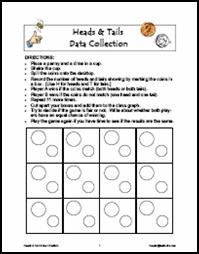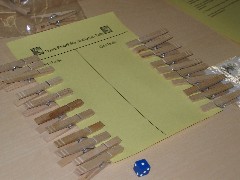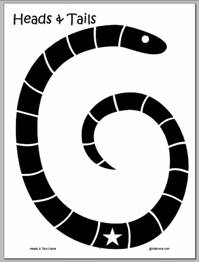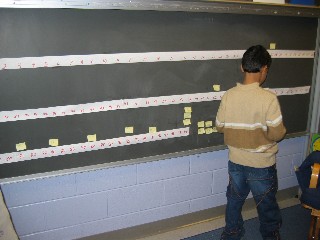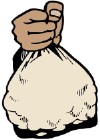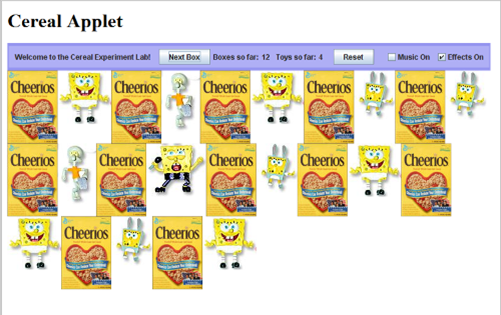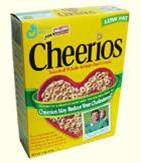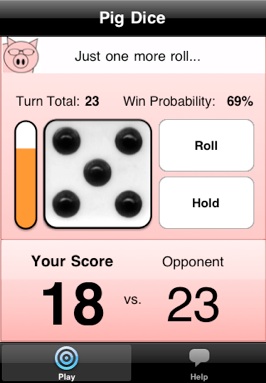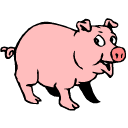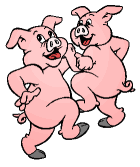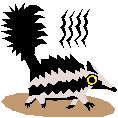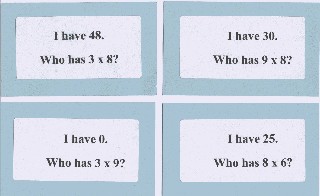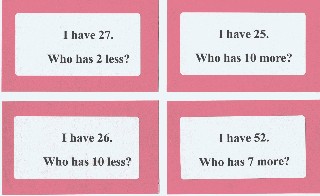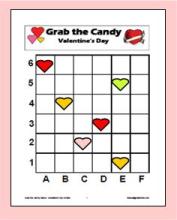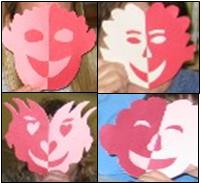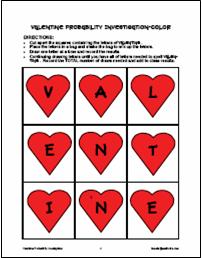Game of Pig: one die version
This is best introduced as a class activity. Students collect points for each toss of the die unless a ONE is tossed, which means they lose all of the points they have collected in the round. To prevent losing their points, students may elect to stop at any point in the game before a ONE is tossed and they get to keep the points they collected but get no further points. Students love the game and begin to appreciate that theoretical probability and experimental probability are often quite different!
Game Analysis: Once students are familiar with the game, encourage small groups to develop a "winning strategy" and explain it to their classmates. Then play the class game with groups competing to see who has the best strategy in the actual game. Repeat, as necessary, for students to modify strategies. NOTE: Some student strategies are: stopping after 5 tosses, stopping when they have 20 points, stopping after the second toss of a 6 or a 5, etc. Be sure to ask students to explain the thinking behind the strategy.
Terry's Note: I have used this with students in Grades 1-12 as well as in teacher training sessions and everyone loves it! Students record each toss and then must add up a string of numbers providing great practice in mental math. Students also continue to search for that magic strategy that will help them win. Along the way, they informally experience, and thus learn, a lot about experimental probability. I found this game to be a great use of those few minutes at the end of class to keep students actively engaged. No student ever groaned when I said we were going to play pig!
- Download directions for playing the Pig Game in a whole class setting.
- Download the Pig Template to use as a recording sheet. Place the sheet in a plastic sheet protector and use dry erase markers to create a reusable recording sheet.
- Have students record each die toss in a Pig Tally Template for easy data collection. This method also groups data so that students see a visual representation of the frequency of each outcome.
- Use copies of the Pig Handout as a writing activity. Encourage students to write about the probability in Pig and what they have learned from playing the game. OR use these sheets for student groups to write out their "winning strategy" and post them on a bulletin board for future reference. Keep a running total of times each strategy is successful in winning.
- Play Pig online.
Game of Pig: Two dice version
Students should be familiar with the one-die version of Pig before playing the 2-dice version. Tossing a one on either die means that the player loses all points collected in that round, if he/she has not stopped before the one is thrown. Any player who is still playing when snake-eyes (double ones) are thrown, loses all points collected thus far in the whole game!
Game Analysis: Students need to develop different strategies for playing this 2-dice version of Pig. After playing several times, student pairs might analyze the two-dice frequency chart to calculate the probability of a one being tossed. Students can use this information to develop a winning strategy and compete against other teams to see whose strategy is most successful.
- Download a two-dice toss frequency chart for students to use in determining the probability of different outcomes.
- See online directions for playing Two-dice Pig.
- Play an online version of Two-dice Pig against the computer.
- See Two Dice Roll for an online simulation of two-dice toss that graphs the outcomes. This is a great way for students to collect larger samples of data to analyze experimental probability against theoretical probability. Groups of students might also use this simulator to generate dice tosses to test their winning strategies.
Game of Skunk
After students have mastered the Pig Game, analyzed the probability of the game and identified winning strategies, introduce the Game of Skunk and challenge students to analyze the probability used in this game and develop a winning strategy. How are the games alike and how are they different? Does the same "winning strategy" work for both games?





